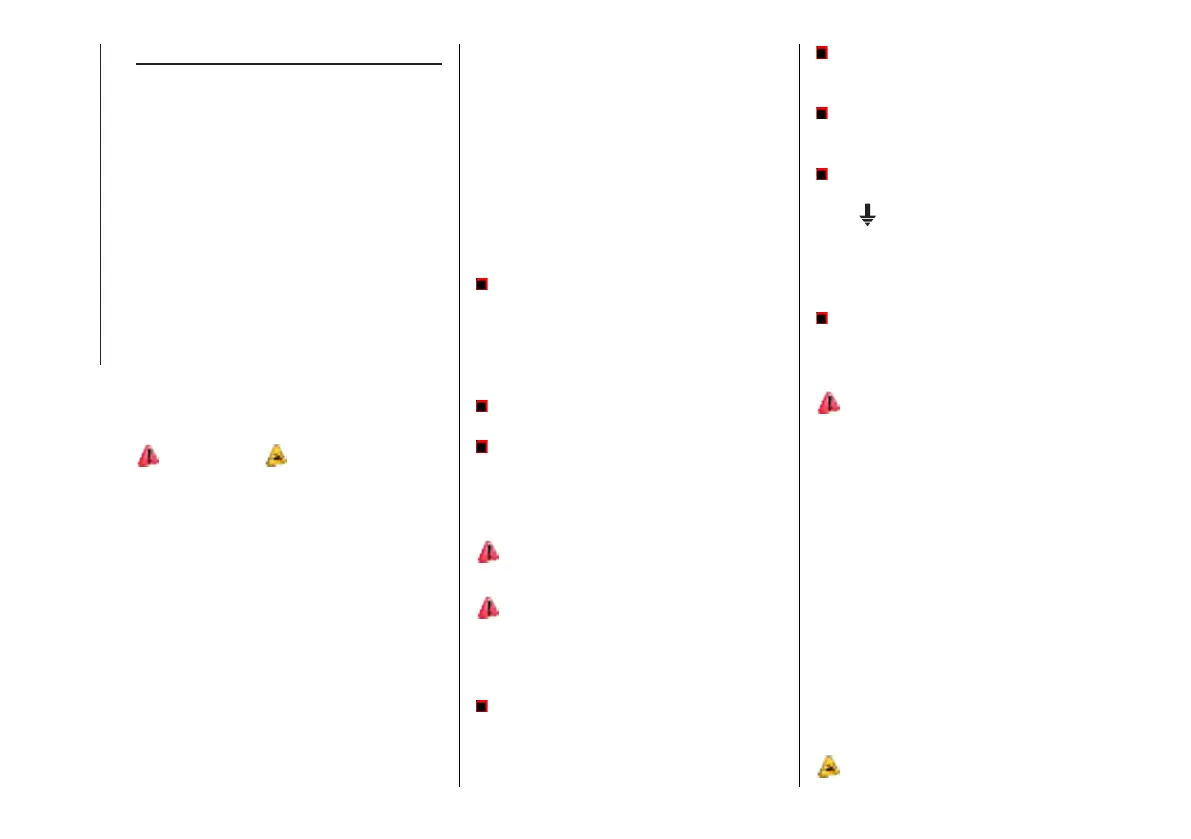IN CASE OF EMERGENCY
302
JUMP STARTING
If the conventional battery is flat, a jump
starting can be performed using the
battery and the cables of another car,
an auxiliary battery or a booster. In all
cases, the battery used must have a
capability equal to or a little higher than
the flat one.
Jump starting may be dangerous if
carried out incorrectly: carefully follow
the procedures described below.
For the Plug-in Hybrid version: If both
the conventional battery and the high-
voltage battery are flat, charge the low-
voltage battery first, in order to start the
system and allow the heat engine to start
in order to move the car. We suggest
then, to also charge the high-voltage
battery.
399) 400) 401) 402) 119) 120)
WARNINGS
When an auxiliary battery is used,
comply with the use and precaution
operative instructions specified by the
manufacturer.
Do not use the booster battery or any
other source of external supply with a
voltage above 12 V. The conventional
battery, the starter, the alternator and
the electrical system of the car could be
damaged.
Do not attempt jump starting if the
conventional battery is frozen. The
conventional battery could break or
explode!
Preparation for jump starting
The conventional car battery is located in
the engine compartment, behind the left
light cluster.
WARNING The positive terminal (+) of
the conventional battery is shielded by a
protective cover. Lift the cover to access
the positive terminal.
operate the parking brake, move the
gear lever to P (Park), for versions
equipped with automatic transmission,
or neutral, for versions with manual
transmission, then set the ignition device
to STOP;
switch off all the other electrical
devices in the car;
should you be using the battery of
another car, park the other car within
the range of the cables used for the
connection, operate the parking brake
and ensure that its ignition is off.
403)
Jump startingprocedure
404)
Cable connection
Proceed as follows to carry out a jump
starting:
connect one end of the cable used for
positive (+) to the positive terminal (+) of
the car with flat conventional battery;
connect the other end of the cable
used for positive (+) to the positive
terminal (+) of the auxiliary battery;
connect one end of the cable used for
negative (–) to the negative terminal (–)
of the auxiliary battery;
connect the other end of the cable
used for negative (–) to an engine
earth (a visible metal part of the
engine or of the car transmission with
flat conventional battery) away from
the conventional battery and the fuel
injection system;
start the car engine with the auxiliary
battery, let it run for a few minutes at
idling. Start the engine of the car with
flat conventional battery.
405)
Cable disconnection
Once the engine has started, remove
the cables as follows: disconnect the
end of the negative (–) cable from the
engine earth with the flat conventional
battery; disconnect the opposite end of
the negative (–) cable from the negative
(–) terminal of the auxiliary battery;
disconnect the positive (+) cable from
the positive (+) terminal of the auxiliary
battery; disconnect the positive (+) cable
from the positive (+) terminal of the car
with the flat battery. If jump starting is
often necessary, have the car battery and
the recharging system checked by a Jeep
Dealership.
121)

